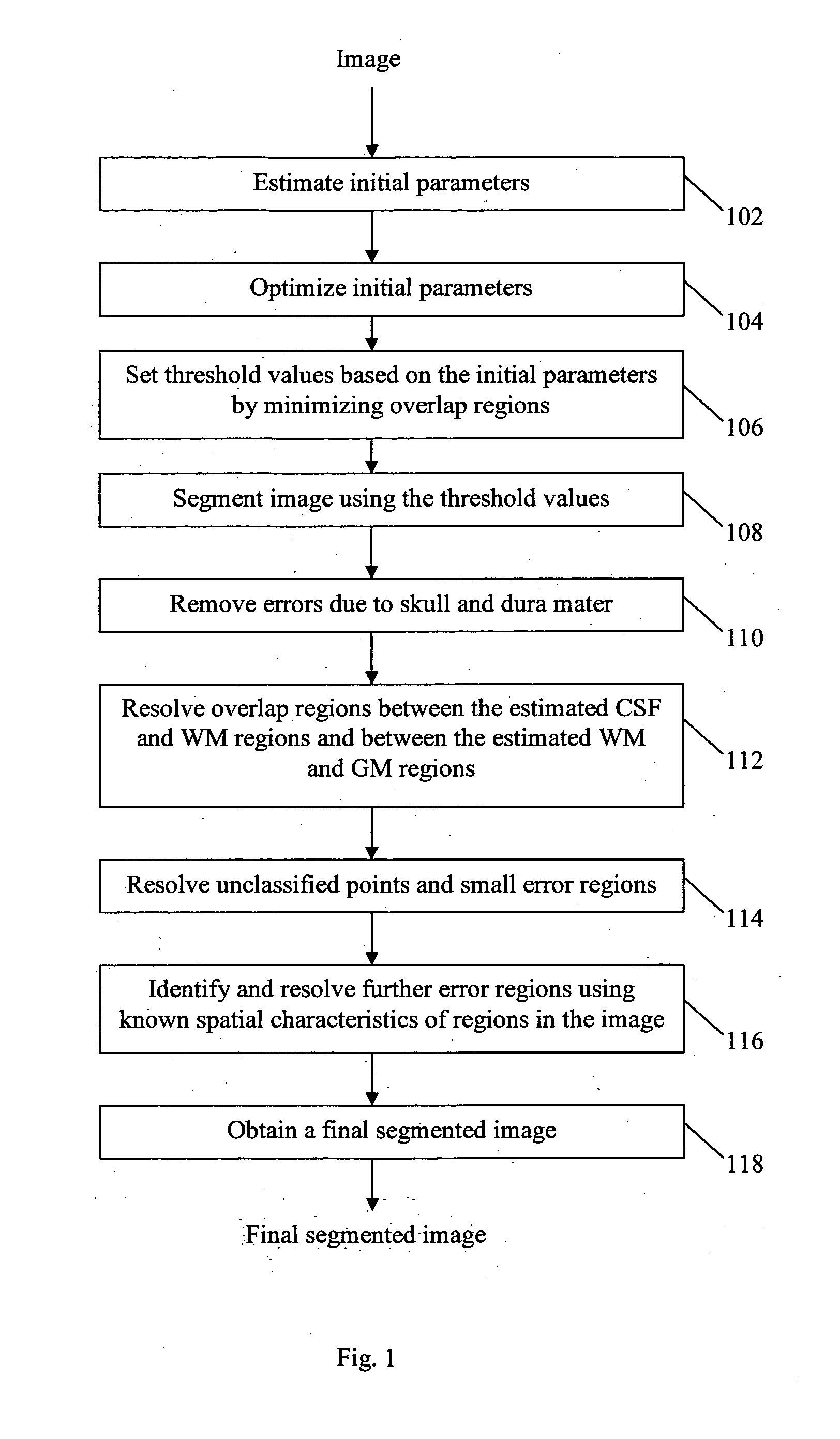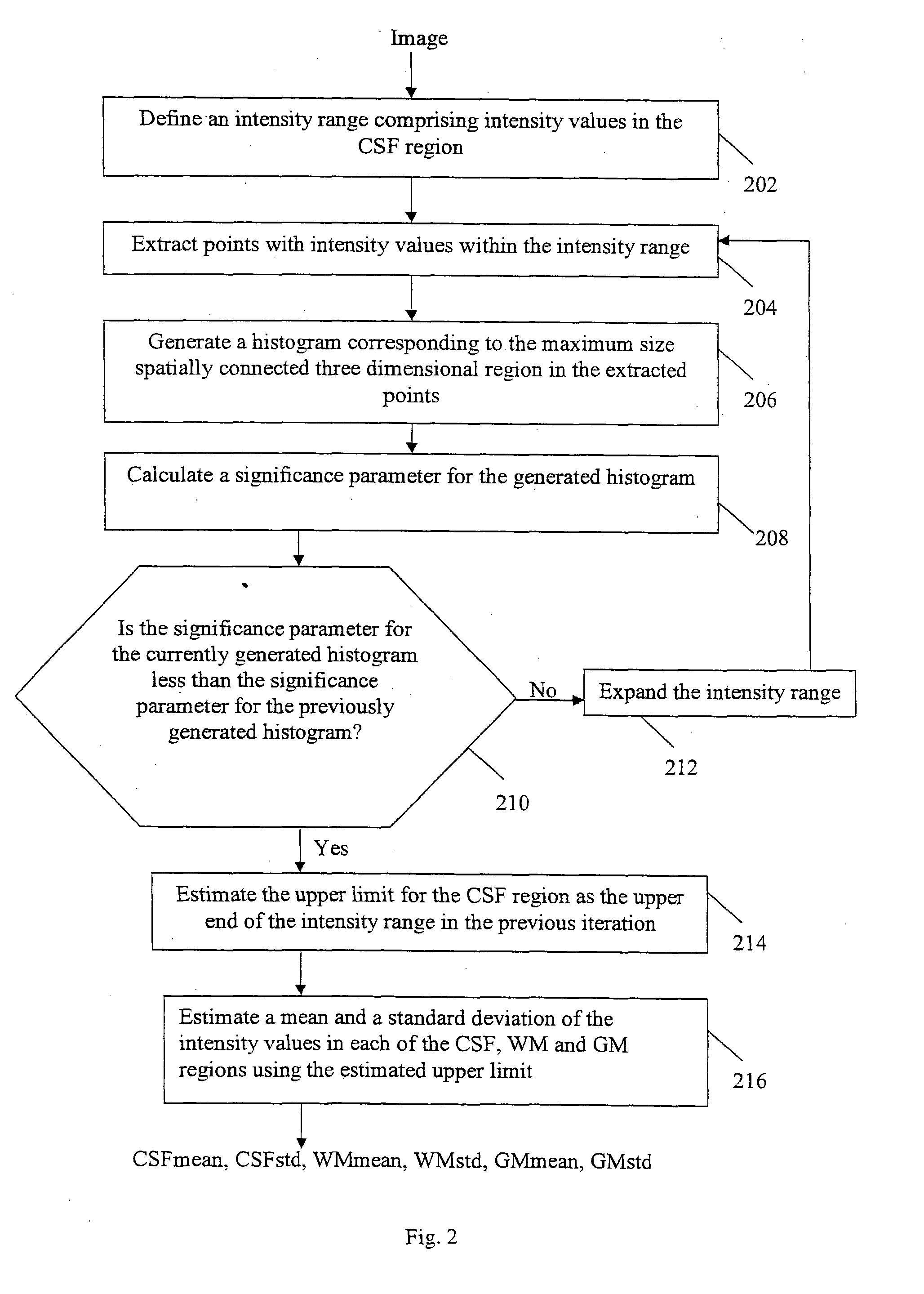Method and system for segmenting a brain image
a brain image and image technology, applied in image analysis, image enhancement, instruments, etc., can solve the problems of affecting the image quality of ct images, increasing their variability, and usually a loss of contrast between gray and white matter, and achieve the effect of reliable discrimination of the csf region
- Summary
- Abstract
- Description
- Claims
- Application Information
AI Technical Summary
Benefits of technology
Problems solved by technology
Method used
Image
Examples
Embodiment Construction
[0028]Referring to FIG. 1, the steps are illustrated of a method 100 which is an embodiment of the present invention, and which segments a brain image into a CSF region, a WM region and a GM region. The brain image comprises intensity values at respective points and is a 3D image since method 100 exploits the fact that in three-dimension and within a parenchyma region in a brain, the ventricle region is the largest connected component. The intensity values may be in Hounsfield units, or may be converted into Hounsfield units as a first step of the method. The points may be voxels of the 3D image.
[0029]The brain image which is the input to method 100 may be a CT brain image. However, the brain image may be of a different image modality (e.g. an MRI image). In step 102, a set of initial parameters are estimated and in step 104, some of the estimated initial parameters are optimized. Next, in step 106, threshold values are set based on the estimated initial parameters and in step 108, ...
PUM
 Login to View More
Login to View More Abstract
Description
Claims
Application Information
 Login to View More
Login to View More - R&D
- Intellectual Property
- Life Sciences
- Materials
- Tech Scout
- Unparalleled Data Quality
- Higher Quality Content
- 60% Fewer Hallucinations
Browse by: Latest US Patents, China's latest patents, Technical Efficacy Thesaurus, Application Domain, Technology Topic, Popular Technical Reports.
© 2025 PatSnap. All rights reserved.Legal|Privacy policy|Modern Slavery Act Transparency Statement|Sitemap|About US| Contact US: help@patsnap.com



